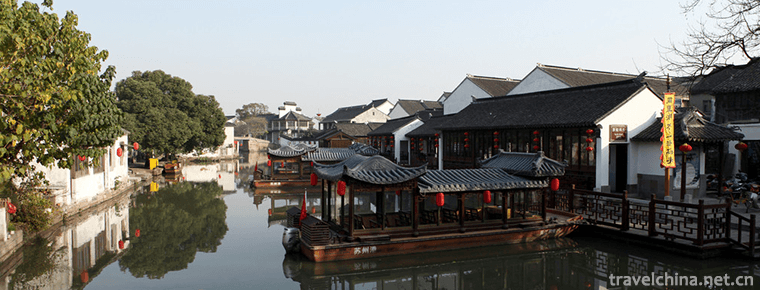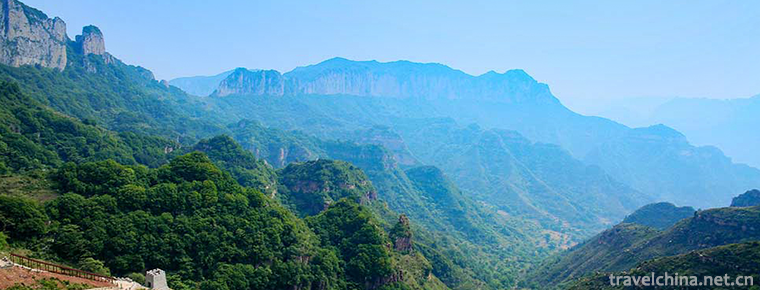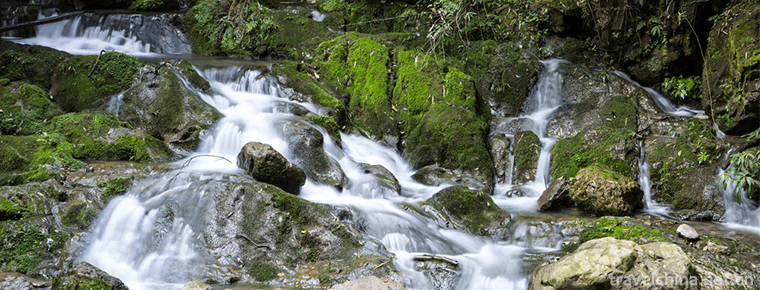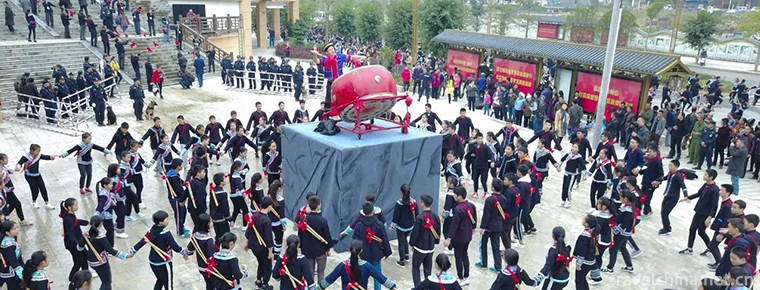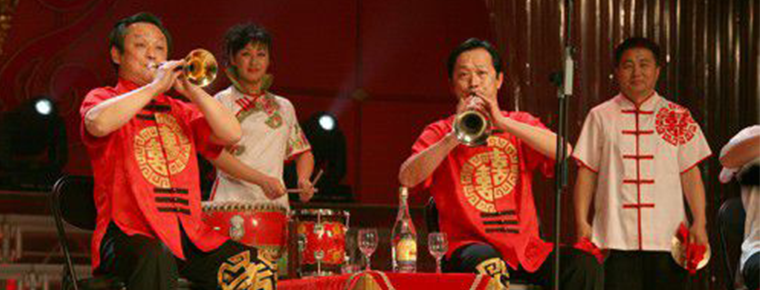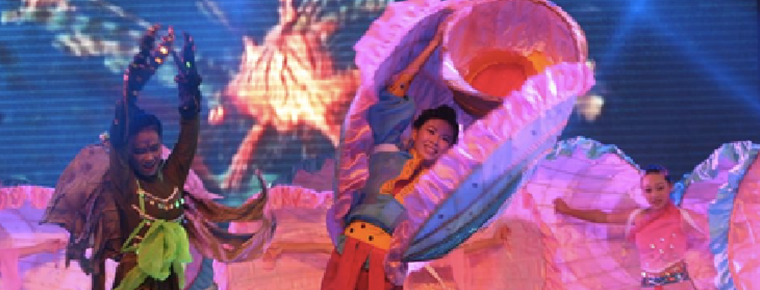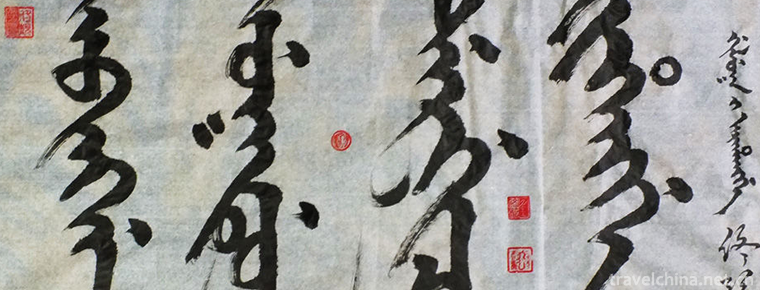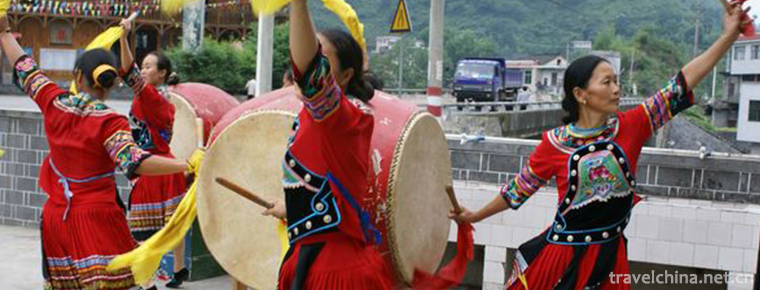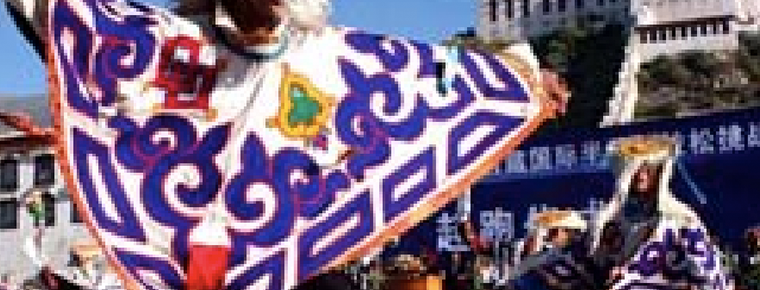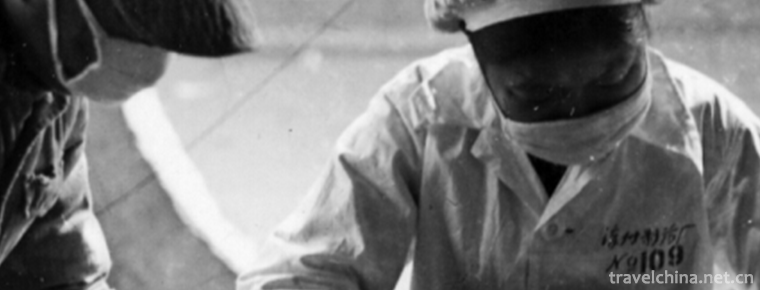Turkish Pan Embroidery
Turkish Pan Embroidery
Tu Pan Embroidery, a traditional Tu folk art in Huzhu County, Qinghai Province, is one of the national intangible cultural heritages.
Pan embroidery is the most important embroidery method in Chinese Tu embroidery, and it is a compulsory course for Tu women in their lifetime. Pan embroidery is a unique embroidery method of the Tu nationality, which is complex and ingenious and contains the profound connotation of the ancient Tu culture. In the eastern mountainous area of Qinghai Plateau, industrious and simple Tu women have inherited the ancient traditional national embroidery art from generation to generation. Their embroidery skills are exquisite, their workmanship is exquisite and skillful.
On May 20, 2006, the Turkish pan embroidery was approved by the State Council and listed in the first batch of national intangible cultural heritage list.
Historical Origin
In the Tuguhun tomb excavated in Dulan County, Qinghai Province, embroidery similar to pan embroidery was unearthed, from which we can see that Pan embroidery technology has appeared around the 4th century.
Li Faxiu, the representative inheritor of Tu pan embroidery, made innovations from various perspectives: in pattern design, incorporating the elements of the times and symbolic events, bringing fresh flavor to Tu pan embroidery; in category development, practical types such as sachets, purses and pendants are the main types, while the base material of Pan embroidery is changed from traditional black cotton cloth to brocade, making it more beautiful.
Cultural characteristics
Artistic Characteristics
Pan embroidery is silk embroidery, with red, yellow, green, blue, cinnamon, purple, white and other seven-color embroidery, embroidery is generally full of seven colors, color coordination, bright and dazzling. The design of Pan embroidery is ingenious and has a strong national style, including dozens of styles, such as Falun, Taijitu, Five-petal Plum, Immortal Queen, Moire, Rhombus, Sparrow Head, Fortune Head, Character, Buddha Statue, etc. The embroidery stitches of Tu nationality are delicate and distinct.
Production process
Disc embroidery material is exquisite, fine processing, with black cotton cloth as the base material, and then choose the fabric paste. The needle method of disc embroidery is very unique. When the needle is manipulated, two threads of the same color are used, one for disc thread and the other for sewing. Disk embroidery does not need a scaffold, but operates directly with both hands. The embroiderer holds the cloth in his left hand and the needle in his right hand. The thread for the diskette thread hangs on his right chest, and the thread for the suture thread goes through the eye of the needle. Upper needle tray, lower needle sewing, one needle and two threads, although labor and materials, but the finished product is thick and gorgeous, durable.
Subject works
Pan embroidery can be seen everywhere in Tu people's life. It involves headdress, collar, belt, pillow towel, needle tie and purse. The most common patterns are Babao, Caiyun, Taijitu, rich head, eight lotus petals and so on. The main works are Tu flower sleeve shirts (called "Xiusu" in Tu language)
Inheritance and Protection
Inheritance value
The Tu embroidery with a thousand-year history has been handed down till now, and its cultural and artistic value can not be underestimated. Turkish pan embroidery is colorful and lifelike in design. It reflects the aesthetic attitude and value judgment of the nation in shape, color, quality and meaning. It provides fresh materials for the study of Ethnology and aesthetics.
Turkish pan embroidery works show the extensive and exquisite folk culture and art of the Turkish people, and have high ornamental and collection value.
The Tu pan embroidery art is an important carrier of the Tu culture and a cultural product with distinct ethnic regional characteristics. It carries too much cultural information in the history of national change and is the material symbol of the spiritual cohesion of the whole Tu nationality.
Heritage figures
Li Faxiu, female, Tu nationality, born in 1959, is a native of Huzhu Tu Autonomous County, Qinghai Province. The first batch of national intangible cultural heritage projects are representative inheritors of Tu embroidery.
protective measures
Under the guidance of Qinghai University for Nationalities, Huzhu Tu Autonomous County of Qinghai Province set up three cooperatives of township enterprises for Tu embroidery, which helped sign an order of 90,000 yuan for Suzhou famous brand enterprises, benefiting more than 300 local Tu embroidery mothers.
Relying on Colleges and universities in and outside Qinghai Province, Qinghai has held 16 training courses for inheritors of national and provincial non-heritage projects, such as Tangka, Japanese stone carvings, Huangzhong silver and bronze wares, Huangzhong embroidery, Tu pan embroidery, Hehuang embroidery, Gologesar handicraft and so on, with a cumulative training of more than 900 people.
social influence
Important activities
During the 2008 Beijing Olympic Games, Li Faxiu participated in the exhibition of folk art "Chinese Stories" recommended by Qinghai Cultural Department. Since then, the "non-surviving flower" inheriting the emotions between Tu women and mothers has won many honors such as the Gold Prize of China Weaving and Embroidery Exhibition, and performed at the UN Women's Congress.
The Turkish pan embroidery works won the gold medal in the 2009 "Splendid China" China Weaving and Embroidery Exhibition.
In 2013, Tu embroidery participated in the 4th Chengdu International Intangible Cultural Heritage Festival of China, co-sponsored by the Ministry of Culture, the Sichuan Provincial Government, the National Committee of UNESCO of China and UNESCO.
On December 11, 2017, the intangible cultural heritage exhibition of the Marine Silk Road opened in Quanzhou, Fujian Province, the starting city of the ancient Marine Silk Road. On-site exhibitions of the splendid "non-relics" treasures on the "Haisi" road included the Tujia embroidery in Qinghai, the traditional embroidery techniques in Beijing, the Yangliu Youth Painting in Tianjin, and the Manchu paper-tearing skills in Changbaishan, Jilin Province. The style highlights the master craftsman's superb craftsmanship and ingenuity, conveying a strong regional characteristics and national customs.
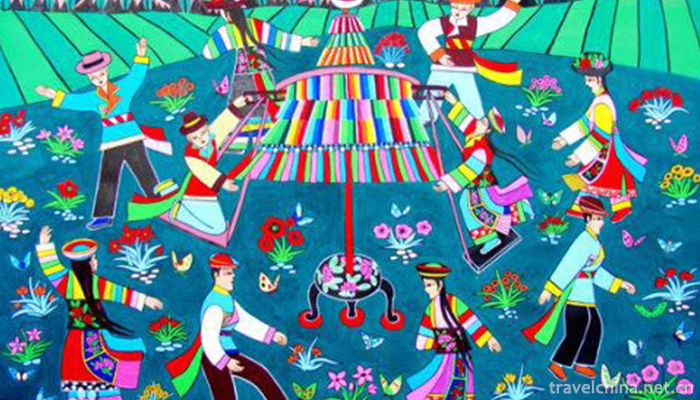
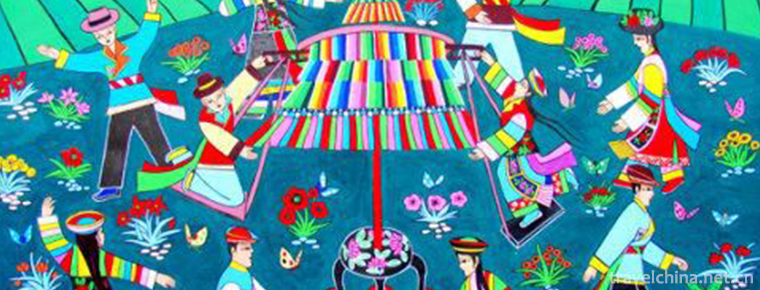
Turkish Pan Embroidery
-
Tong li ancient town
Tongli Ancient Town belongs to Wujiang District, Suzhou City, Jiangsu Province. It was built in Song Dynasty. There are many gardens, temples, residences
Views: 286 Time 2018-12-06 -
Qibugou Scenic Area
Qibugou Scenic Area is located in Wu'an Huoshui Township, Handan City, Hebei Province. Wu'an National Geological Park and the hinterland of the National Forest Park, Hebei Province
Views: 191 Time 2018-12-17 -
Black Valley Scenic Area
Black Valley, National AAAAA Tourist Scenic Spot, National Forest Park, National Geopark, China's Best Leisure Mountain, China's Best Green Low Carbon Tourist Leisure Spot
Views: 121 Time 2019-01-13 -
The First Bay Scenic Area of the Yangtze River
The first bay of the Yangtze River (the first bend of the Yangtze River and the first bay of the Wanli Yangtze River): located between Shigu Town of Lijiang City in the northwest of Yunnan Province an
Views: 178 Time 2019-03-17 -
Buyi Peoples Changing Dance
The Bouyei people, who can sing and dance well, have created colorful Bouyei culture. Buyi people like singing and dancing to express their feelings whether they
Views: 131 Time 2019-04-04 -
Percussion music
Percussion is one of the traditional Chinese instrumental music. Music played by two kinds of musical instruments, i.e. playing and playing, is commonly known as Gong and drum or drum music in Chinese
Views: 199 Time 2019-04-22 -
Stories of Marine Animals
Marine animal stories are mainly handed down orally. The traditional folklore stories circulated in the islands for a long time have been formed and disseminated in Dongtou
Views: 308 Time 2019-05-02 -
Manchu calligraphy
Manchu calligraphy is a kind of calligraphy created by imitating Chinese seals in the Qing and Qianlong periods. In 1748 (the thirteenth year of Qianlong), Emperor Qianlong of Qing Dynasty ordered Fu
Views: 244 Time 2019-05-16 -
Encouragement of Miao Nationality in Western Hunan
Encouraged by the Miao people in Western Hunan Province, the traditional dance of Tujia and Miao Autonomous Prefecture in Western Hunan Province is one of the national intangible cultural heritage.
Views: 251 Time 2019-07-03 -
Harmonic Qin
In the history of Harmonious Qin, young men and women in Nima Township, Bango County, Naqu Prefecture, Tibet had a tradition of gathering to dance Harmonious Qin. Whether it was the end of farming or
Views: 306 Time 2019-07-06 -
Traditional preparation methods of traditional Chinese medicine
Traditional Chinese medicine preparation method, one of the traditional Chinese medicine, is declared by the Chinese Academy of Traditional Chinese Medicine and the Chinese Association of Traditional
Views: 210 Time 2019-08-03 -
Animal resources in Leshan
The composition of the wild fauna in Leshan City is located in the transitional zone between the Palaearctic realm and the Oriental realm. It is mainly composed of the southwest region and central China region of the Sino Indian subregion in the Oriental realm.
Views: 351 Time 2020-12-17
